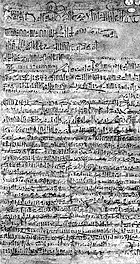 |
 |
| Between the 17th and 19th years
of the reign of Ramesses XI, the viceroy Panehsy (viceroy of
Nubia) had been installed in Thebes with an army probably to
keep the peace. But at a time of famine, with supplies running
low, Panehsy came into conflict with the High Priest of Thebes
of that time - Amenhotep. Force was used against Amenhotep (who
had control of the vast estates of the temple of Amun). Panhesy
kept Amenhotep from his post for 9 months (a fact recorded on
an inscription at Karnak). Eventually Amenhotep asked the king
for help, the king had to turn to the general Payankh to defeat
Panehsy. The following conflict was known as the 'War of the
High Priest' in which fighting in the north of Egypt destroyed
the town of Cynopolis before Panhesy was driven beyond the southern
frontier, taking refuge in Nubia.(Panhesy continiued to take
action until the end of Ramesses XI's reign, when Payankh was
still standing against him. General Payankh defeat of Panehsy gave him control of one of the major military forces in Egypt, he also took control of Panhesy's titles (including 'Army Commander' and 'Overseer of Granaries'). To these titles he added 'High Priest of Amun' and Vizier. This was the first time that a single person had been giving the power of having overall command of the army and also the supreme title of High Priest of Amun. This, of course, left Payankh in a very strong position and conversely left Ramesses XI in a very weak position. A new era began - the 'Repeating of Births' (or 'Renaissance'). This new era saw Egypt being divided into two regions: a) Delta and Nile valley as far south as el-Hiba b) Southern Egypt, centered on Thebes. The Northern zone was ruled by Pharaoh (including its chief cities of Memphis and Tanis). The southern zone was controlled from Thebes by Payankh's sucessors (combining the roles of supreme general and High Priest of Amun). Although the foundation of the Theban High priest is normally identified with Herihor, recent research has found that Payankh was the originator of this new arrangement. Payankh was possibly of Libyan origin, and may have been descended from mercenaries who settled in Egypt in the 20th Dynasty. With the death of Ramesses XI the 20th Dynasty (and the New Kingdom) came to an end. The division of the land of Egypt took a more formal arrangement, Smendes became King and ruled from Memphis and Tanis (the term 'Repeating of Births' was now dropped). |
 |
